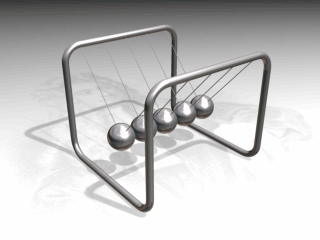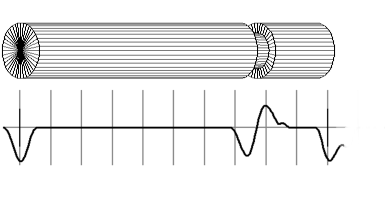

SONIC PILE TESTING
The method for pile integrity test
AKA: Echo test, Pulse test, hammer test, Pulse-Echo Method (PEM), Pile Integrity Test (PIT test), Impulse Response, etc.
The Sonic Pile Testing also known as PIT test is covered in ASTM Sonic standard D5882-16 for pile integrity test.
In the Sonic test, the top of the pile is tapped with a lightweight plastic hammer and the reflected wave are recorded by a piece of suitable computerized equipment. From the resulting signal or reflectogram, one can determine both the length and continuity of the pile.
In its most basic form, the sonic test measures the time between the hammer trigger, and the reflected wave, to indicate the pile's length. this is very similar to the famous Newton's cradle "executive toy".

An interactive simulation of the method is available with Pilewave simulator here - (no setup required)
Although a powerful tool, the Sonic method also has limitations, such as:
The test produces no information regarding the pile capacity and gives only limited information about the concrete quality.
For the test to be effective, the top of the pile should consist of clean concrete and be free of debris, laitance, and bentonite. Testing a pile with a head that was not properly prepared may yield misleading results.
The accuracy of the length determination depends on the assumed wave velocity. This factor, which depends on the grade and age of the concrete, varies from pile to pile and may cause an error of the order of 10 percent. It is thus evident that the Sonic test should not be used as a basis for payment.
The reflected wave is influenced by changes in both the cross-section and friction along the skin. These two factors can be separated only if adequate information is available regarding the soil profile and if a reasonable number of piles is tested.
The wave traveling along the pile loses energy as a result of skin friction. In soils with high strength, as well as in rock, there may be a situation where no toe reflection is visible. This may happen when the length exceeds 20 to 40 diameters, depending on the amount of friction.
Since a serious defect or discontinuity will fully reflect the wave, the Sonic methods provide no information regarding lower levels. It also cannot distinguish between a large cavity and a hair crack.
